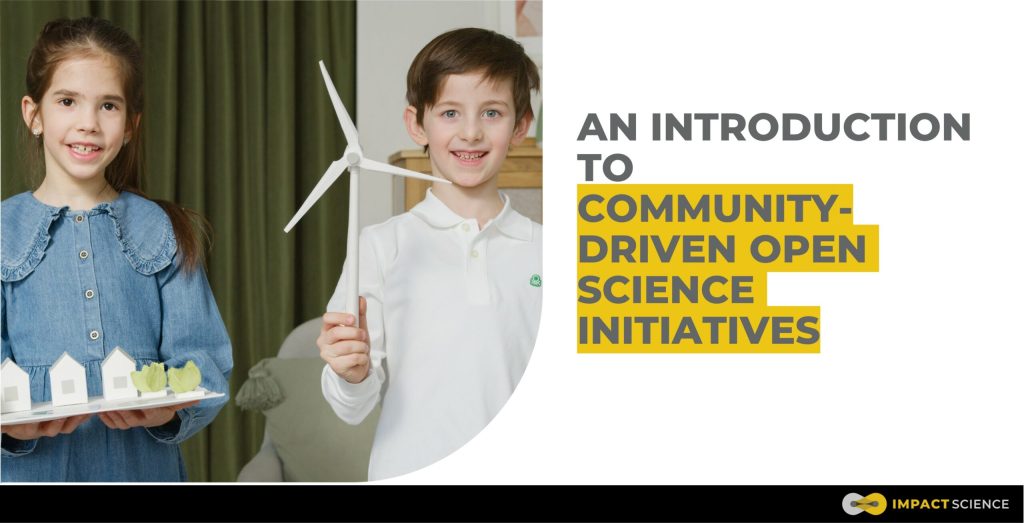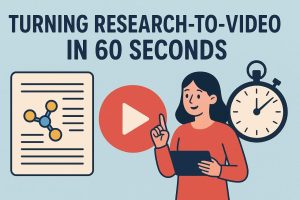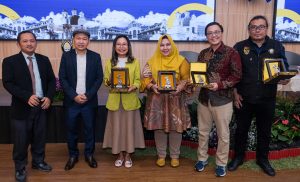The wave that is open science is continuing to grow and is bringing science and research to within reach of all levels of society. People who are interested in helping to solve some of the world’s problems now have the opportunity to become involved in research studies, both in the collection and use of data. This democratization of science benefits both society and the world environment through increasing scientific literacy and the awareness of community problems.
What is open science?
According to UNESCO, ”Open science is a set of principles and practices that aim to make scientific research from all fields accessible to everyone for the benefits of scientists and society as a whole.” Open science encompasses practices such as open and immediate publication, data and code sharing, broader research dissemination, and greater collaboration at all levels.
Open science includes both top-down and bottom-up relationships between scientific researchers and interested citizens and their communities. The traditional research model exemplifies the top-down approach with trained scientists conducting studies and disseminating the results through journal publication. The worldwide trend toward open access in science is highlighting the bottom-up model, in which the research study originates within the community from citizens who may or may not be trained scientists.
What is community science?
Community science is a bottom-up approach to research that emphasizes collaboration and is driven by community members. The Association of Science and Technology Center’s (ASTC) Community Science Initiative is one of the growing number of organizations working to advance community science. As stated on their website, “With community science, community members collaborate to conduct and leverage scientific research and technological innovation to advance community priorities and benefit from knowledge and advancements of science and engineering, often in collaboration with scientists and science-engagement practitioners.”
Although the term community science is frequently used interchangeably with citizen science, some publications differentiate between the two. For example, GVI, which offers nature conservancy programs, believes the difference is in the levels of involvement and leadership. “Citizen science mainly draws on the participation of a layperson, usually offering minimal training or instruction. In contrast, community science relies on experts and specialists to provide guidance and assistance during data collection and analysis. Citizen science projects can often reach a broader population and gain more public awareness, while community science projects tend to be more specialized.”
Whatever these research projects are called, they provide almost limitless opportunities for laypersons to become involved in helping to address issues occurring in their communities and the world. This involvement can lead to not only the development of future scientists but also to greater scientific literacy for all.
Examples of community-driven open science initiatives
Community and citizen science projects are proliferating worldwide. A few examples of the many recent community-driven open science initiatives are as follows:
- In the Aso-Kuju National Park in Japan, invasive plants have been negatively affecting the park’s biodiversity. To address this issue, a researcher worked with local participants to collect geospatial data for the plant species. Using this information, a management plan was created to lessen the plant’s impact. The initiative results, along with the data, were published in a scholarly journal. This project was made possible by the collaboration of non-expert participants with expert researchers.
- Another ecological monitoring project, Public Lab, which is under ASTC, was created in response to the 2010 BP Oil Disaster in the Gulf of Mexico. According to their website, “Public Lab launched an open source platform to collect data and maps of changes in the coastline over time. This effort has since transformed into a strong community-created and -driven environmental monitoring and assessment program.”
- Ottawa Riverkeeper, a charitable organization dedicated to protecting the ecological health of the Ottawa River in Canada, is involved in several investigations of the river’s watershed health. For some of these projects, volunteers are relied on “to collect data from a much broader swatch of the watershed than we could investigate on our own.”
- The Singapore government sponsors numerous opportunities for citizens to engage in scientific research, which are published on their national parks website. For example, one such investigation involves an intensive field study to document the park’s flora and fauna diversity to which the public are invited to participate in collaboration with expert naturalists.
- In South Africa, citizens were invited to join the Snorkel for Science Initiative, with over 1,000 snorkelers participating in the past year. These citizen scientists joined a marine biologist in a guided snorkel to document the range of benthic sharks in the area. Photos taken of the sharks are used to monitor the animal’s population and health of its environment.
- Community science initiatives are also being introduced into education, where most programs have traditionally used top-down approaches. In Chile, a study was conducted in which bottom-up approaches were used to engage students in educational institutions. These citizen science investigations were based on students’ interests and developed by students in collaboration with teachers and scientists. The results of the study indicated that such an approach yields quality research and promotes scientific skills and learning in the participating students.
- The European Citizen Science Association (ECSA) was established in 2013 “to encourage the growth of citizen science in Europe, and to support the participation of the general public in research processes – across science, social science, humanities and the arts.” The organization studies the influence of citizen science on research and scientific capacity-building, along with sponsoring and coordinating citizen science projects, such as the following example.
- COMPIR, a program under the ECSA, focuses on local air quality across Europe. Citizen participants, even those without a science background are “invited to analyze the data and use it to co-create new climate friendly behaviors and policies that address sustainability both at home and across the continent to improve the quality of the air for all.” This effort involves 15 different organizations from six different European countries.
As can be seen from just these few examples, numerous opportunities exist for citizens to participate in research designed to investigate the issues affecting their communities. In addition to improving lives and environments locally, these projects expand scientific literacy and encourage further involvement in research activities.









